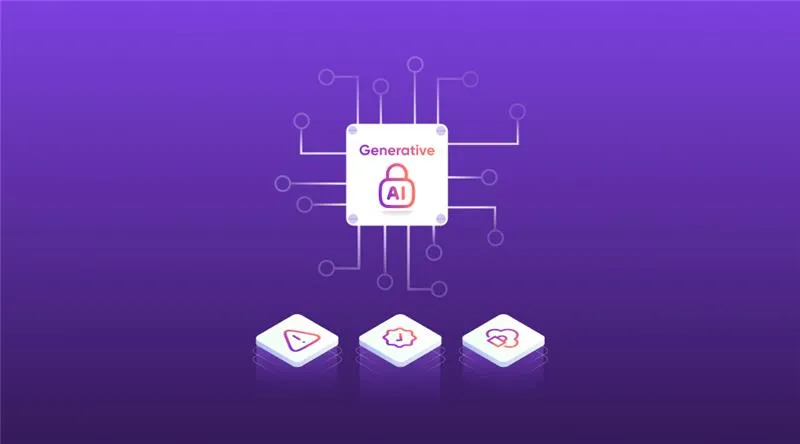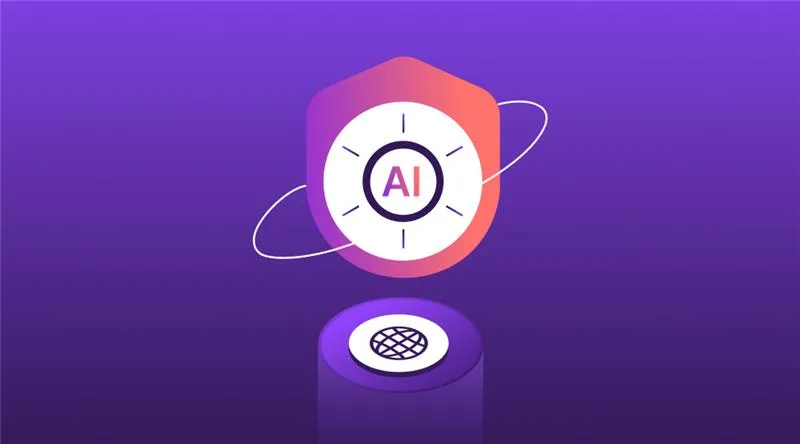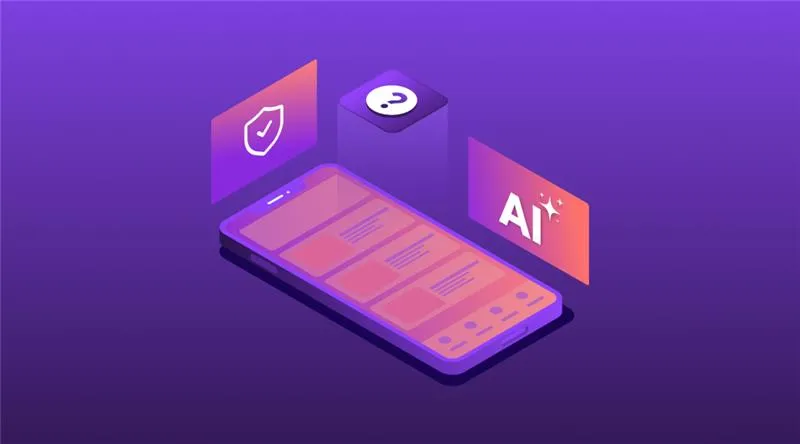Technology

5 min

Building a high-performing e-commerce app? Learn how React Native is transforming the future and delivering amazing results. Read this blog to build a successful React Native ecommerce app to improve sales. Covering the features, step-by-step process, comparison with Flutter, etc. Give it a read!

By Ayushi Shrivastava
18 Dec, 2024
Do you know more than 7.6% of retail flourish in the UK through mobile e-commerce?
Building an e-commerce app can be tedious, but it is essential to expose products and services to a mass audience. With a modular component-based approach and third-party library support, React Native for e-commerce enables hassle-free app deployment. It's driving the revolution to all businesses with utmost convenience and scalability.
Here, in this blog, we’re sharing the step-by-step process to build a React Native Ecommerce app.
The global market size of the e-commerce business was 24 trillion USD in 2025 and is expected to reach 62.1 billion by 2031.
Initially, React Native was a Hackathon project (Meta, formerly Facebook). It was published in 2015.
React Native has impressed the industry worldwide with its incredible fusion of JS, JXL, and Native threads. It enables bidirectional communication to power the cross-platform version of the app.
It delivers a seamless and spectacular experience, making a large user base across the global marketplace. There are many other reasons to choose React Native for e-commerce apps, let’s discuss below.
First of all, the apps created with React Native are compatible with running on both Android and iOS platforms.
Developers have the accessibility to pick any components and reuse them to launch a different version offering uniform functionality.
It keeps the development budget in control as developers don’t need to waste time and effort on creating two different codebases for diverse launches.
Perfect for modest and major-level functionality with responsive, reactive UI.
Minimize compilation time without compromising the state and refresh the app with all the latest modifications.
Enabling fast-forward-thinking future application releases with sharable resources.

Whether you want to start from scratch or customize it according to your unique business needs, React Native is capable of tailoring a distinct brand image. The affordability, scalability, and accessibility of reusable components with a single codebase makes it in high demand, that's why React Native is used.
Below is an easy approach to designing a scalable and flexible mobile app store that uses React Native for e-commerce.
The React Native app needs to have numerous features, from onboarding the user to making the purchase.
Whether it's a small or large business idea, both can accelerate sales with an e-commerce app. Businesses can receive a good amount of orders and deals globally. Therefore, if you have a unique idea for catering to the marketplace and building an app, we at Quokka Labs can create the quality app to equip you with all the essential features and all screen sizes.
Let's start with the first step to know how to build a shopping app with React Native.
In the first step, start setting up the development environment and project for a React Native application for e-commerce.
Go to the Node.js website and download the Node.js installer.
Then proceed next to install React Native with npm.
Also, to ease the debugging, connect an emulator.
Navigate to the terminal or command prompt.
Copy/ paste this command to your IDE and initiate a new project to run on the server, equipping and configuring all the essential dependencies.

Before you head on to the deployment, refer to the BRD and SRS to understand the intent and requirements. It guides you in strategizing the navigation, product screen, details screen, cart, payment integration, filters, user authentication, and other advanced features.
Define the essential libraries for animation, navigation, user journeys, and how the user will navigate through multiple screens. Pay attention to functionality and how the user will interact with the app interface while exploring different products and their details.
Adopt a minimalistic look with essential UI components and design libraries. Ensure that it looks uniform and responsive across all screens and devices.
Generally, developers prefer to connect Node.js, and Express JS with Mongo DB for successful data management and backend fetching.
Launch the essential APIs to manage authentication, product listing, cart setup, and payment integration.
Redux and MobX are the main state management libraries. To manage the flow, utilize the potential of reducers, query selectors, and actions. Ensure that the component transfers information uniformly without interruption.
The login page is the first screen where the user interacts with your app's functionality. If it does not look interesting or appealing or if it takes too long to load and respond, the user will not install the app and will immediately uninstall it.
Ensure that user data and privacy are non-negotiable, Hire React Native developers that can do this job efficiently. Prioritize session management; authorization rules should align with the authentication algorithm. Enable multi-factor safe login through token-based, hashing, and biometric authentication practices.
The product screen is an essential component of your React Native e-commerce app, and it is where you can display your product and services. Thus, asking the UI/ UX designers' team to build something appealing can turn the heads of everyone to explore once.
Each product is identified with an ID, and some of the details are also included. Decide how to feature the image, product details, price, and CTAs. To deliver a smooth shopping experience, you need to add on and run essential queries.
Access the ProductList component to establish database connectivity and structure a list. Enable the API to fetch the data and display it as a list. Below is the code to access it. A flat list will display with TouchableOpacity. The user can tap to view the product details.

Consider how users will search. Filter, categorize, and sort the items at their convenience. Whether it’s a mid-size app or a larger one, practice data management strategies, pagination, scrolling, and lazy loading for seamless rendering and UX. It will drop the cart abandonment rate.
To make your cart easily accessible throughout the app’s multiple screens, equip the React’s context API. Here’s the process to code.
Users can hold and remove the cart items from here. The CartProvider component enables accessibility to hold the cart state and wraps the app.

After creating the product list and cart icon, you need the functionality to add/ display product details so that users can learn about the product.

Likewise, we need to design the product details screen to show the details of what you’re carrying in your cart. Implement the interface functionality to remove or add product counts, quantities, and prices at the time of checkout.

Of course, you’re taking the reference of e-commerce apps like Amazon, Flipkart, and Nykaa, where at the top of the header, you see an icon displaying the count of items you saved in your cart for future purchases. To enable and display this shopping cart icon's usability, feed this code for reference. When users tap on this, they will be redirected to a different screen in the shopping cart.
 Get all together!
Get all together!
You have created the product screen, product details, shopping cart button, and summary screen. Now, it's time to assemble everything and equip the navigation functionally. To access this, we will use the React Navigation library. Do it like the following code.

Here, you can see the CartProvider tag that makes the cart state accessible throughout the app.
In this step, you must design the screen for payment gateway that previews order and order confirmation details. PayPal is the most preferred payment gateway.
In this step, you can use testing tools to find bugs like Appium, Jest, React Native debugger, Jasmine, and ESLint tools. After that, it will be given forward to deployment.
We’ve reached the final stage now!
As the building is finished, look for the APK App Store and Google Play Store release guidelines.
It takes time to create and assemble all apps. To launch online stores with React Native mobile development, refer to this guide.
To make the release successful, curated the best practices sharing with you in brief.
It’s a retail delivery business app set up in the USA. To optimize operations and improve efficiency, it has adopted React Native planned to build a Cross-platform app with React Native to boost shopping.
Myntra got the customers' nerves regarding what they look like the most in an app—product catalogs, user profiles, orders, easy-to-navigate UI, design, etc. Myntra has adopted this technology to enable a rapid and robust shopping experience.
To deliver a seamless and spectacular experience and make a unique space across the global marketplace, Shopify has adopted the React Native mobile app development. It drives substantial growth and productivity.
It’s your turn to enter into e-commerce and make the products and services more accessible for your customers with a React Native E-commerce mobile app. Capture the market, delivering a hassle-free digital shopping experience.
React Native is suitable for any startup or big-size project, yet Flutter never falls short in any place. React Native and Flutter keep shuffling their positions and are always behind each other. Both are favorable options for launching high-performance applications that can rule resolving real-world problems. Highlighting the best essences of Flutter and React Native for e-commerce business below.
React Native has the essence of JavaScript, whereas Flutter is based on Dart, which is quite a new language.
When it comes to compilation, Flutter wins over React Native. React Native has better community support, with detailed documentation, tutorials, and libraries. At the same time, the Flutter community is still growing gradually due to a lack of knowledge and expertise.
React Native has a pool of libraries to accommodate the app with advanced integration to rule the audience. Flutter limits access to third-party libraries.
JavaScript is one of the core building blocks, so many developers are familiar with its flow and working mechanism. Flutter has the essence of C++. However, the merging of new languages makes it complicated for beginners.
For steady and stress-free development, React Native is better, but if someone literally likes to deal with challenges and develop a highly high-level ecommerce business app, then go for Flutter.
The last call is yours only for React Native ecommerce app development, depending on your business vision and needs.
Ace the space as a front-line entrepreneur reaching out to potential clients with React Native ecommerce app. It’s a necessity in the modern era, making the brand indispensable. Along with the conventional approaches, businesses need to launch the app. Connect with us to share your responsibilities and drive your core operations efficiently by accessing the React Native app development service.
Ans: Businesses with online apps are rising and shining faster as compared to physical stores. The average screen of any mobile user is around four hours. Thus, it's an opportunity to flex your brand globally, adapting the React Native app development for e-commerce stores. Convert mobile users to potential customers who will purchase your app. Achieve a hike in revenue with e-commerce apps, which are now hiring React native professionals.
Ans: Mobile apps are modest, faster, and convenient to use. React Native application development is worth it for driving business operations effortlessly for mobile users. Most of the time, customers hold their phones in their hands.
Instead of visiting websites, users like to scroll through apps to explore products and services. Apps with rewards, cashback, digital payment card discounts, and loyalty programs attract customers, increasing the rate of conversion and earning more money and traffic.
Ans: React Native offers native app-like accessibility with optimized performance. It enables flexing and scaling the app features, as well as accessing exclusive libraries. It can make the app launch faster with pre-built templates and also from scratch.
Ans: Lack of planning and proper strategy can lead to problematic events. However, it is crucial to manage states, carts, and the checkout process. Accumulation of unnecessary widgets and inconsistent navigation also impact users' engagement with an e-commerce app.
Generative AI Implementation Strategy: From Concept to Deployment (Step-by-Step Guide)
By Sannidhya Sharma
5 min read
How to Design a Web App: From Wireframes to Working Prototype
By Dhruv Joshi
5 min read
How Much Does Generative AI Development Cost in 2026?
By Dhruv Joshi
5 min read
How to Build an AI Adoption Roadmap That Ensures Measurable ROI
By Garima Saxena
5 min read

Technology

7 min
Generative AI is moving fast into enterprises, from banks to hospitals to government agencies. Adoption is rapid, but security planning lags. Unlike traditional systems, these models can be exploited through prompt injection, poisoned data, or manipulated to leak sensitive information. They are also misused for phishing, deepfakes, and malicious code.


Technology

7 min
AI-powered Web Application Firewalls (WAFs) go beyond static rules by using machine learning, anomaly detection, and predictive analysis to block zero-day threats, reduce false positives, and protect APIs at scale. Unlike traditional WAFs, they self-learn, adapt in real time, and cut operational costs while improving compliance and trust.


Technology

5 min
AI is redefining mobile app security by transforming how threats are detected, tested, and prevented. From continuous monitoring and fraud detection to compliance with regulations, AI ensures apps remain resilient against modern risks. This means safer apps, protected users, and stronger businesses. Investing in AI-driven security today builds trust, drives growth, and secures long-term competitive advantage.


Feeling lost!! Book a slot and get answers to all your industry-relevant doubts